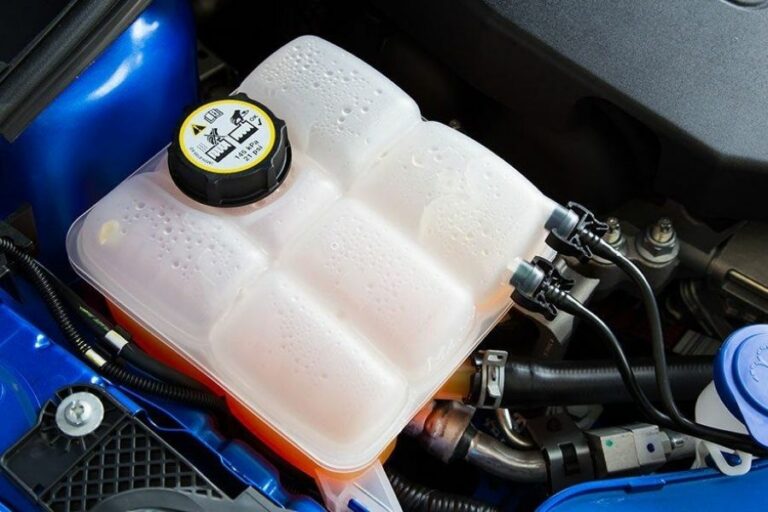A Comprehensive Guide on 3rd Gen 4runner Transmission Fluid
With so many new gravel roads popping up these days, we’ve seen 3rd gen 4Runners jump to the forefront to enjoy overland adventures. Consequently, transmission issues can be evident anytime.
The old or depleted 3rd generation 4Runner transmission fluid is certainly one of the most common causes of those issues. Ignoring this can get you to end up with a whopping $3,000 repair bill.
To help you stay conscious, we have formulated this guide with all the necessary information.
Should I change the 3rd Gen 4runner Transmission Fluid or not?
First thing first, we have seen a common question among people, why does Toyota not recommend changing transmission fluid? Whether it’s a rumor or not, the only objective is to ensure safety.
This is because many people tend to pour the reservoir with excess or the wrong fluid. Some people don’t go through the 100% fluid flash.
However, it makes people confused about changing the transmission fluid. But when it comes to answering the question, should I change the transmission fluid?
We will say yes, you should, but depending on the same factors. The transmission of your 4runner is the most expensive component right after the engine.
Dealing with such an expensive component requires superior mechanical skill and precision, if you or your mechanic have it, then it’s okay.
And of course, the transmission shouldn’t be near the end of its lifespan. If the transmission is too damaged or old, don’t change the fluid.
Read Also: Turbo 350 Transmission Fluid Type and Capacity: What You Must Know
What Type of Transmission Fluid is used in 3rd Gen 4runner?
So, the first question might rise in your mind, what type of transmission fluid is used in 3rd gen 4runner? Well, your 3rd gen 4runner transmission uses a distinct transmission fluid regardless of whether it’s manual or automatic.
A lot of people interchange the fluid used in 3rd gen 4runner transmission with 2nd gen 4runner transmission fluid. However, this is absolutely wrong. Before you fill or drain your 3rd-generation 4Runner transmission, be careful of the specified fluid.
According to the 3rd Gen Toyota 4runner owner’s manual, you can use any 75W90 rated GL-4 OR GL-5 fluid for the transmission. Both of these are universal lubricating oils. However, the major distinguishing factor is the amount of EP additives.
Here once again you have to be cautious, particularly if you’re going to use GL-5 lube. The classic GL-5 generally comes with sulfur compounds, which are corrosive and damage the internal parts.
So, be sure to find modern GL-5 with less sulfur content, otherwise, it’s best to stick to GL-5 gear oil.
How Much Transmission Fluid Do I Need in A 3rd Gen 4runner?
Many things in life agree with that old proverb, It’s better to have more than you think you need instead of just having enough. This common phrase ties in with many aspects of our life.
But the reverse is true for the transmission fluid in your Toyota 4runner as it can badly impact the transmission. Hence, you shouldn’t ever pour the fluid reservoir more than its requirement. So, how much transmission fluid a 3rd gen 4runner transmission requires?
The transmission fluid capacity of the 3rd Gen Toyota 4Runner transmission is generally 2.0 quarts (1.89 liters). This refers to the optimum volume required to power the 3rd Generation Toyota 4Runner’s automatic transmission.
Meanwhile, the 3rd gen 4runner manual transmission fluid capacity is 2.3 quarts (2.18 liters). However, if the engine has gone through an overhaul or upgrade, or you’re utilizing different fluids, the transmission fluid volume can be larger.
Read Also: Mazda 3 Transmission Fluid Type
When Should You Change 3rd Gen 4runner Transmission Fluid?
As you do periodic maintenance operations on your Toyota 4Runner such as changing the engine oil, you likewise need to change the transmission fluid after a given period of time.
Most experts say that just like all their other vehicles, Toyota suggests a 3rd gen 4runner with manual transmission should have the fluid changed within 30,000-60,000 miles.
But, if your 4runner has an automatic transmission, the interval is extended up to 60,000 to 100,000 miles. Nevertheless, for serious off-roaders, the interval can be 15,000 miles for manual and 30,000 for automatic transmission.
Signs You Need to Change Transmission Fluid
In case, your transmission goes through an extreme toll on it, the fluid can be depleted before the standard interval time. As a consequence, you may notice some evident signs. So, be aware of the following signs that urge a transmission fluid change.
Dark Brown or Blackened Fluid
In order to facilitate your maintenance, it’s important to check the engine’s transmission fluid on a regular basis. However, we think it’s best that a trained technician perform the test.
Ideally, the transmission fluid in your vehicle should be clear and bright red. If you notice that your transmission fluid is dark brown or black, you should bring it to a mechanic for repair.
Gear Shifting Issue
If your engine revs while you’re driving, but you feel your 4runner isn’t speeding up, your transmission might be stuck in gear.
Besides, if you have a 3rd gen 4runner with a manual transmission, then you may spot some resistance when you attempt to shift gears. This condition usually occurs when the transmission fluid is low.
Slipping Gears
Have you ever noticed your 4runner’s gear slipping out automatically? This is one of the most significant signs of low transmission fluid.
By way of example, perhaps you’re adhering to a constant velocity, then all of a sudden feel your vehicle slowly decrease in speed or push gear to the following level. In this case, your transmission fluid needs to be checked.
Strange Noise
You might know, the prime objective of the transmission fluid is lubricating the internal components of the transmission.
So, when the transmission fluid is low or loses its ability to lubricate anymore, it may create some strange noises.
These sounds usually resemble parts grinding or grating into each other when you shift gears.
Read Also: C6 Transmission Fluid Type
How to Check 3rd Gen 4runner Transmission Fluid?
As we said before, checking the transmission fluid should be done by expert technicians. However, if you’re confident enough to perform this task, try to follow the below-mentioned steps.
Step-1: Warm up the Vehicle
Before you attempt to check the transmission fluid level, you have to warm it up to the appropriate operating temperature, by running it a little and letting it experience all gears.
Step-1: Park it On a Flat surface
Next, you will want to make sure that the vehicle is in a flat location before accessing the transmission system.
Step-3: Asses the gearbox
Take off the wheel and splash protectors from the front side. Remove the cover covering the gearbox and fluid reservoir. Now remove the dipstick from the fluid reservoir and wipe it off using a soft cloth or towel.
Slowly insert the dipstick into the reservoir until the bottom is immersed. Now take it out and inspect the tip. The dipstick has two markings that denote the minimum and maximum fluid level.
If the fluid level is in between the upper and lower markings, your automobile has appropriate fluid levels. However, if it is at the low mark or below, you should add more fluid.
Note that, if your 4runner has a manual transmission, you might not have a dipstick, instead, you have to remove the fluid check plug.
Read Also: Dodge Ram 3500 Transmission Fluid Type
How to Change 3rd Gen 4runner Transmission Fluid?
If you’re skilled enough and want to save the labor cost for changing the transmission fluid in your 3rd gen 4runner, this portion is for you.
Once again, we remind you of heading to a professional mechanic or your dealership. However, if you insist on doing it yourself, follow the steps mentioned below:
Step 1: Drain the Old Fluid
The very first thing you must do to change fluid is draining the outdated fluid. The 3rd gen model 4Runner has fewer complications than many.
First, you have to remove one bolt from the bottom of the transmission component pan, and that’s the drain plug.
Place the drain pan below it, then slowly loosen it to drain the transmission. Wait until the full procedure is finished, and then tightly fasten the bolt again.
Step 2: Pour Fresh Fluid into the Transmission
To the left of the transmission, pour about two quarts of fluid (two and half for manual transmission). If you have the automatic transmission model, you will first remove the dipstick, pour the fluid from its dropper into the transmission
After that, put the dipstick back. However, in the case of a manual transmission, you can use a fluid transfer pump to pour the transmission.
Read Also: 700R4 Transmission Fluid Type
What transmission fluid does a 2000 4Runner take?
A 2000 Toyota 4Runner takes Dexron III or Dexron VI transmission fluid. Dexron III is a synthetic-blend transmission fluid that is suitable for use in most automatic transmissions. Dexron VI is a full synthetic transmission fluid that is more durable and offers better protection against wear and tear.
What kind of transmission fluid does a 2002 4Runner use?
A 2002 Toyota 4Runner uses Dexron III transmission fluid. Dexron III is a synthetic-blend transmission fluid that is suitable for use in most automatic transmissions, including the 4-speed A340F transmission that is found in the 2002 4Runner.
3rd Gen 4runner Transmission Fluid Capacity
The 3rd generation 4Runner transmission fluid capacity varies depending on the model year and engine type. However, a general rule of thumb is that the transmission fluid capacity is about 4 quarts. However, to get the system completely clean, you may need to replace 6 quarts.
Here is a table of the transmission fluid capacity for some popular 3rd generation 4Runner models:
| Model Year | Engine Type | Transmission Fluid Capacity (quarts) |
|---|---|---|
| 1996-2000 | 2.7L 4-cylinder | 4 |
| 1996-2002 | 3.4L V6 | 4 |
| 2003-2004 | 2.7L 4-cylinder | 4 |
| 2003-2004 | 3.4L V6 | 4 |
| 2005-2009 | 2.7L 4-cylinder | 5 |
| 2005-2009 | 4.0L V6 | 5 |
FAQs.
Our fervent fascination with fields of expertise and the things we are concerned about gives us boundless questions. Because of this, we have created an FAQ section to cater to additional queries.
Is changing 3rd gen 4runner transmission fluid beneficial?
Yes, changing the transmission fluid in your 3rd gen 4runner is beneficial. It will ensure better fuel economy, smooth gear shifting, and most importantly save you from a massive repair bill.
Is the fresh Toyota ATF always red?
The color of the fresh Toyota ATF is translucent dark. However, over time it will become dark brownish or something blackened.
Is flushing 3rd gen 4runner transmission fluid the same as changing it?
No. The flushing procedure removes all the old fluid with a flushing pump, and fills the transmission with fresh fluid. Whilst, fluid changing refers to a drain-and-refill process where a small portion of the old fluid remains in the transmission.
Final Words
Your 3rd gen 4runner transmission fluid is subject to degradation over time as you change gears, and the torque converter handles copious amounts of stress.
However, if you’re not conscious enough, you may not be able to anticipate what’s going on in the transmission. So, rather than waiting for any visible symptoms, check your transmission on a regular basis.
And it’s always best to change the fluid after the recommended interval we have mentioned before. No matter whether the fluid is showing dark color or not, or your transmission is showing issues. Till then, stay safe and drive carefully.


![Mazda 3 Transmission Fluid Type and Capacity [2003-2023]](https://carfluidpro.com/wp-content/uploads/Mazda-3-Transmission-Fluid-Type-768x512.jpg)



